Exercises to improve balance in seniors can be simple, safe and effective.
Improving your balance is one of the ways you can minimise the risk of falls and feel better.
Balance exercises are an important part of an exercise regime, especially for older adults. It is best to seek the help of a physiotherapist before starting a balance program as they can tailor exercises specifically to your needs.
Below is a bit of a taste of what your balance program could include, as we bring you five simple and safe balance exercises that you can do at home.
Before starting these exercises, make sure you have a stable surface that you can either hold onto or sit down on, in case you start to feel unsteady on your feet.
1. Heel & toe raise

- WHY? Helps to strengthen the muscles in your feet and lower leg. These muscles help to clear your feet as you are walking and helps to avoid shuffling.
- HOW? Standing with your feet positioned hip-width apart, bring your weight forward onto your toes, raising your heels off the ground. Hold for 3 seconds. Rock your weight back onto your heels, raising your toes off the ground. Hold for 3 seconds. Repeat x 10.
2. Bottom kicks
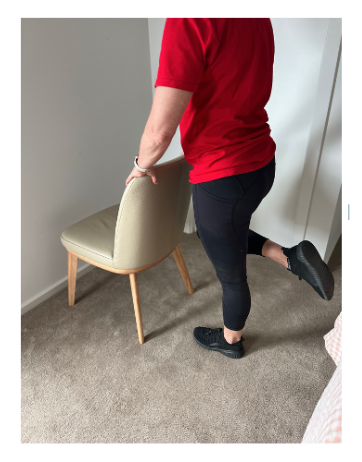
- WHY? Helps to strengthen your stabilising leg and core muscles that help to maintain your balance, particularly when needing to squat down.
- HOW? Standing with your feet hip-width apart, bend one knee, bringing your heel towards your bottom while balancing on your grounded leg. Keep your body upright. Repeat x 10 on one leg then repeat x 10 on the other leg.
3. Sit to stand
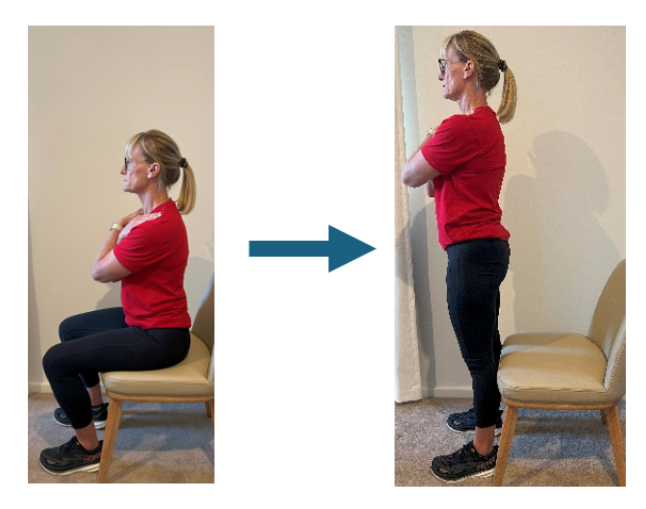
- WHY? This exercise is very functional, improving your mobility and strengthening your legs, core muscles and back muscles.
- HOW? Start in a seated position, on a firm, stable chair. Wriggle your bottom to the edge of a chair and stand up. If you can, try to not use your arms to push up from – place them across your chest or above your head. Repeat x 10.
4. Step-ups

- WHY? Another functional exercise. This exercise trains each leg independently, improving your ability to take the stairs and lift your legs up when you walk.
- HOW? Standing in front of a step, step your right leg up and bring your left to meet it. Step the right leg back down then the left so you return to the starting position. Repeat x 10 leading with the right leg, then 10 leading with the left leg.
5. Balancing with your feet together
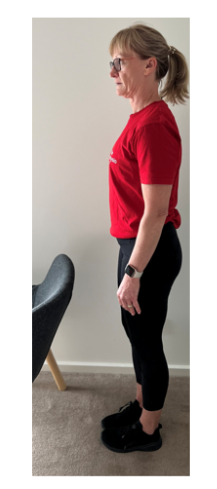
- WHY? Having your feet together decreases your base of support and makes you more unsteady. To improve your balance, you need to challenge your balance.
- HOW? Stand with your feet together and arms resting by your side. Aim to balance for 30 seconds. If this is too easy, try closing your eyes, turning your head from left to right or raising your arms above your head.
Have some fun!
Of course, it is important you enjoy what you are doing and have fun while doing it. Try these tips for doing your routine without it feeling like actual exercise:
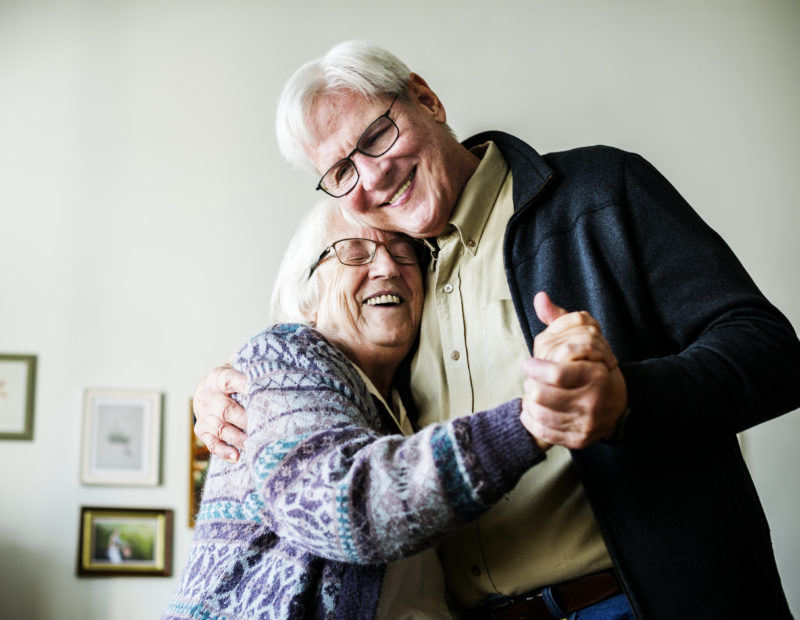
- Put your favourite music on and have a boogie while cleaning the house. Dancing is a great way to move your body outside of your ‘base of support’ and challenge your balance.
- Exercise during the commercials of your favourite TV show. No one likes the commercials, right? Use this time to do each of the exercises above. Perform one exercise for the length of one commercial. Once the commercial is over, move on to the next exercise. Your rest time is when your TV show is back on!
- Challenge your balance when you are standing still. Doing things like washing the dishes or brushing your teeth is the perfect opportunity to challenge yourself. Try exercises like standing with your feet together, one foot in front of the other or even standing on one leg if it is safe for you. Doing this while using your upper body at the same time really adds to the difficulty.
Staying safe at home is the first steps to better balance and better health.
The Physio Co’s team of physiotherapists are available to visit you wherever you call home, and available for online consultations.
We are here to help, so get in touch today for more information – please call on 1300 797 793 or email [email protected]
Article written by Madeline Low – Physiotherapist

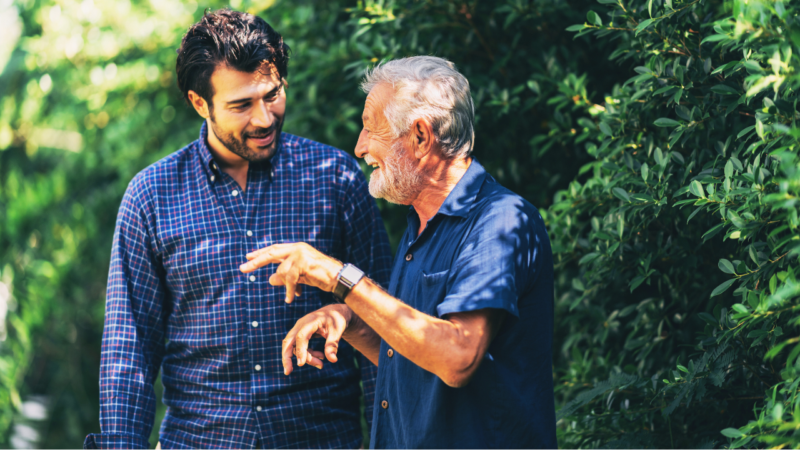

 1300 797 793
1300 797 793